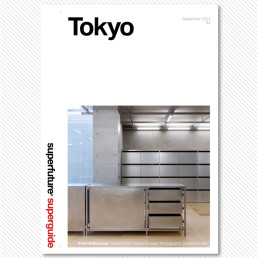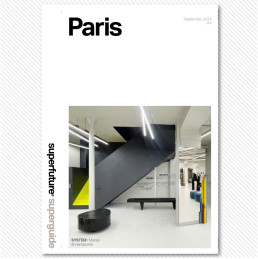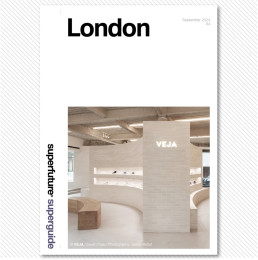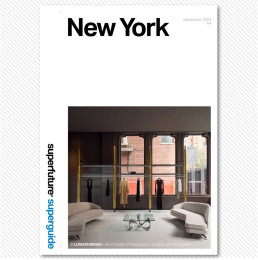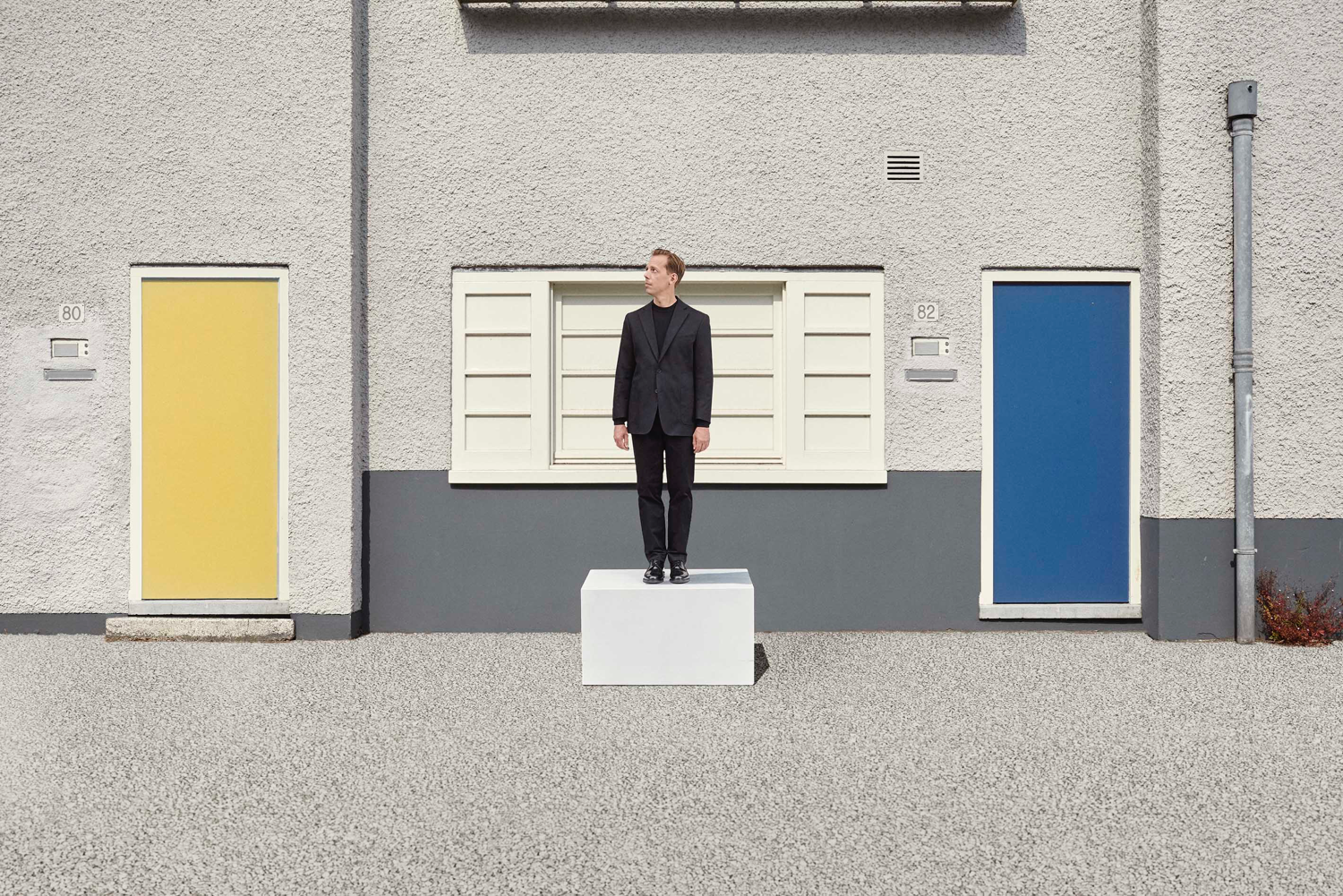
In today’s fast-paced world, seasonal fashion is a grid the majority of consumers rely on. But there’s a growing demographic that has grown tired of trends and fads, and rather rely on classic designs to enhance their lifestyle. It’s within this context that Koen Tossijn meticulously operates, creating timeless menswear by enhancing the look and fit of staple pieces and using top quality materials. The Dutch designer stoically steers clear from fashion’s usual cycles to carve a niche business for himself that appeals to the savvy few. Tossijn‘s craft and vision is reflected by a beautiful retail and workspace in Amsterdam‘s notorious yet gradually transforming Red Light District. A little while ago, Superfuture paid Tossijn a visit for a little chat about his passion and view on fashion and style, and obviously his own designs.
Your visual language and sense of aesthetics are very Dutch. It comes across as orderly, subdued and rational. It seems to indicate a strong adherence to Calvinism, are we right? f so, how did your sense of quality and luxury come about? Absolutely. But I’d like to add that despite my Calvinist background, I’ve been strongly influenced by the cultures of Southern Europe and the way of life there. First and foremost, it’s the because of my love of the food, especially Italian cuisine. It’s the appreciation of the very best in food that persists there, but also the love for quality in many other fields that I admire and feel close to. You could say my love for beautifully made fabrics and well-tailored clothes stems from that perception. So, although my roots lie in The Netherlands, I very much allow myself to enjoy life, and this, I believe, comes across in the quality of the products I design.
What’s your definition of luxury? Do you think your designs fall into that category, and do you think luxury is understood and appreciated in The Netherlands? I don’t think my designs fall into the traditional luxury category. That particular product segment has developed in such a way, it hardly contains any elements associated with my designs. However, in essence, I believe my products are indeed luxurious. Because of the way they’re made, they come with an ensured longevity, and additionally, it narrows down wardrobe choices to a set of well-crafted constants men can rely on. That saves precious time in the daily rituals for most men. I believe it’s very fitting for the times we live in. I believe that here in The Netherlands appreciation of luxury and quality is prevalent in interior design and food, and not so much in fashion. Luxury in fashion and the appreciation of high-end garments here is still generally viewed from a Calvinist point of view – it’s not done.
If we understand you correctly, you design your garments yourself, but have allocated their production elsewhere. Could you elaborate on the practical side of your operations? Where are your designs produced, and are there fixed workshops and manufacturers you work with? And how do you source the right fabrics? That’s right. I actually have a database of manufacturers I work with, but I’m always looking for the best workshop for each of my products. For instance, my gloves are made in a different place than my shawls, beanies and socks. The list of manufacturers is simply the result of years of research, but even through recommendations from friends. They’re all based abroad as I don’t collaborate with Dutch manufacturers, and basically because the quality isn’t quite as good, and also, the production costs are much higher. I always visit the manufacturers personally, it’s also very important to find common ground, if you know what I mean. Sometimes it takes a few years to get there. I love working with people who are passionate about their work and usually that helps to connect us. As for fabrics, I only work with Japanese suppliers for denim, and Italy and the U.K. for other fabrics.
Your designs are timeless and intentionally stand outside fashion’s seasonal cycle. How do you go about trends? It’s a bit risky to categorize my designs as timeless because any design is anchored within a certain timeframe. So, I’m not sure my designs are timeless. I’d say the way I work and what I make is perhaps a trend in itself as lately more people out there have emerged that do similar things!
Your current operations as a designer and retailer are modest in size. Would you consider expanding it, and manage more stores? Absolutely. Obviously, I would no longer be able to meet and interact with all clients personally, but it would be ideal if somehow that weren’t necessary anymore, so I could fully focus on production and perfecting my product even more.
How would you describe the profile of the Tossijn client? I’d say in terms of age 30 to 40 something, having an above-average income, and it’s someone who’s very often interested in design. But then again, I also have one or two lawyers as a client.
Your focus is on further improving men’s wardrobe staples. Given today’s growing focus on the environment and sustainability in fashion, do you view these new values as fitting for your drive to improve apparel pieces? And do you apply them already? In my work the sustainability element is captured by my selection of quality fabrics which provide longevity as clients will be able to wear them for a longer period of time. To me, my products have an emotional sustainability in particular as their extended use will certainly create an attachment. Obviously, such items come at a price, but I believe that makes you even more involved with your purchase.
What is according to you the added value of having a store, especially in today’s digital age? The added value of a brick and mortar presence is having direct contact with customers. I’d say that especially for my kind of products clients need to see and feel the products, and that can only be achieved by way of a retail space. I have a keen eye on what’s happening in the digital world, but because of the aforementioned, but I believe much more in an emphasis on physical retail. I very much have the same view on retail as a consumer. I chose to set up shop in the Red Light District because it has a downtown vibe, it’s vibrant, and I’m surrounded by quirky peers, such as Patta and BLACK Comme des Garçons.
Are there any designers or brand out there that you admire and have inspired you? Yes. Helmut Lang was fantastic. Mostly because of the way he defined clothing. You know, I have a preference for the 1990s because it was an era in fashion when designers were doing incredible things and that fashion itself was moving forward on many levels. But since the turn of the century, that energy faded. Fashion now is only about selling as much as you can. Back then, designers truly had a creative vision. I don’t see that anymore, except perhaps in music. As for my inspiration, that actually comes from my daily life. So, from my all my daily routines and experiences, also my friends.
What do you think of Amsterdam’s retail landscape? Are there any stores you frequently go to? I really love going to HEMA department store, but don’t like fashion stores. I wear the clothes that I design, so go figure. I also like visiting my local butcher and wine shop, I love good food. The job I had a few years ago at Italian restaurant Toscanini has greatly influenced my view on food and drink.
Note: This interview was recorded before designer Koen Tossijn and his eponymous store unexpectedly announced to cease operations in December 2018.
Publishers Note
Just to be clear – superfuture® is a design blog and not a political commentator. No surprise there. The scope of our content has always been global and borderless, however that can often mean covering projects in countries where we will not agree with the politics or actions of those countries. In a world that’s as screwed up as ever right now, the focus of our support is to those designers, architects and other creatives who aim to make the world a more liveable one – as opposed to people that try their hardest to destroy it. So if a project hits our desk and we like it based on its design credentials, we may choose to publish regardless of its location or creators nationality. superfuture® has always been inclusive and hopes for all current wars, aggression, violence, hate and extremism to end.


